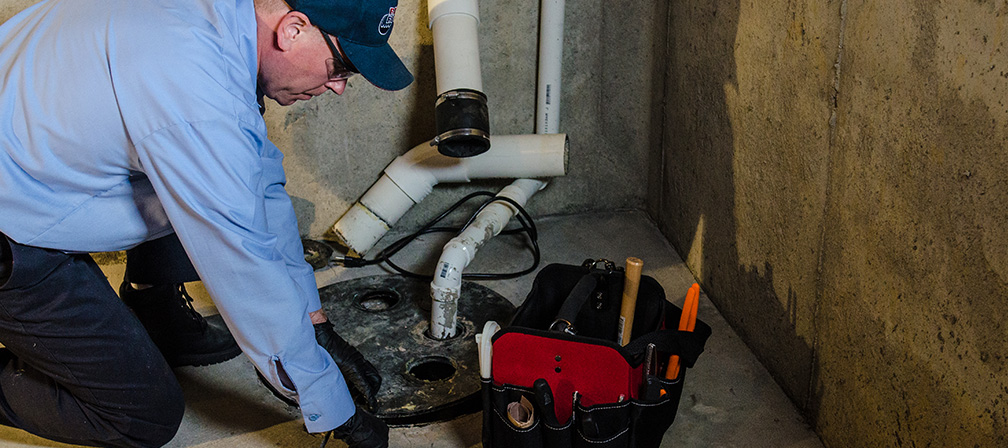The article down the page relating to Steps to Cleaning Your Sump Pump Properly is pretty much compelling. You should read it.

Sump pumps are essential elements in lots of homes, specifically in areas susceptible to flooding or extreme moisture. They aid protect against water damage by successfully getting rid of excess water from basements or crawl spaces. Nevertheless, like any other home appliance, sump pumps need routine upkeep to ensure they work successfully when required one of the most. Cleaning your sump pump is a crucial part of its upkeep, and comprehending how to do it appropriately can conserve you from expensive repairs and prospective catastrophes.
Introduction
Preserving a tidy sump pump is vital for its correct functioning and long life. Ignoring this important task can cause clogs, malfunctions, and eventually, water damage to your residential or commercial property. For that reason, learning just how to clean a sump pump is crucial for home owners that count on these tools to maintain their cellars dry and safeguarded.
Comprehending the Sump Pump
Before diving right into the cleaning process, it's important to have a standard understanding of how a sump pump works. Normally set up in a pit or container listed below the cellar flooring, a sump pump consists of a number of essential elements, including a pump, a float switch, and a discharge pipeline. When water collects in the pit, the float switch turns on the pump, which after that pumps the water out through the discharge pipe, far from the structure's foundation.
Indications of a Dirty Sump Pump
Knowing when your sump pump needs cleansing is crucial for avoiding prospective breakdowns. Some usual indications that show an unclean sump pump consist of odd noises throughout procedure, lowered water flow, and noticeable debris in the pit. If you see any one of these symptoms, it's vital to cleanse your sump pump without delay to stay clear of any type of additional issues.
Getting ready for Cleaning
Prior to you start cleaning your sump pump, it's essential to take some safety and security precautions. Begin by shutting down the power to the pump to stay clear of any type of electrical crashes. Furthermore, use suitable protective gear, such as handwear covers and safety glasses, to shield on your own from dust, debris, and prospective microorganisms.
Step-by-step Guide to Cleaning Up a Sump Pump
Turning off the Power
Begin by disconnecting the power supply to the sump pump to stop any kind of accidents while cleansing.
Getting Rid Of Debris and Dirt
Make use of a pail or a scoop to eliminate any kind of noticeable debris, dirt, or sediment from the sump pit. Dispose of the debris correctly to prevent it from blocking the pump or the discharge pipe.
Cleansing the Pump and Drift Switch Over
When the pit is free from particles, very carefully eliminate the pump from the pit. Evaluate the pump and the float switch for any kind of indications of damages or wear. Use a soft brush or towel to clean up the surface areas and get rid of any kind of accumulated grime.
Flushing the System
After cleaning the pump and float switch, purge the sump pit with clean water to eliminate any kind of continuing to be dust or sediment. This will certainly help guarantee that the pump operates smoothly and efficiently.
Looking For Correct Performance
Prior to reinstalling the pump, perform a quick examination to make sure that the float switch activates the pump properly. Put some water into the sump pit and observe the pump's operation. If every little thing is working correctly, you can reassemble the pump and reconnect the power supply.
Upkeep Tips to Keep Your Sump Pump Clean
Along with routine cleansing, there are several upkeep ideas you can follow to keep your sump pump in optimum problem:
- Regular Inspection: Inspect your sump pump regularly for any kind of indications of wear, damage, or clogs.
- Maintaining the Surrounding Location Clean: Guarantee that the location around the sump pit is without debris, dirt, and obstructions.
- Examining the Pump Regularly: Check your sump pump periodically by pouring water into the pit and observing its operation. This will assist you identify any kind of prospective concerns prior to they rise.
Conclusion
Cleaning your sump pump is a vital facet of its maintenance and makes sure that it operates successfully when you require it one of the most. By complying with the steps laid out in this overview and incorporating routine maintenance into your routine, you can extend the life-span of your sump pump and shield your home from water damages.
6 STEPS ON HOW TO CLEAN A SUMP PUMP PROPERLY
UNDERSTANDING SUMP PUMPS
Your sump pump plays a crucial role in protecting your home by managing and removing excess water. It primarily functions as a “shield”, guarding your basement against the damaging effects of water accumulation. The pump is housed in a sump pit in the lowest part of your basement, and its job is to pump out any water that collects there.
During heavy rainfalls or when snow melts rapidly, water can infiltrate your basement, posing potential risks like flooding, structural damage, and harmful mold growth. Here, the sump pump springs into action, pumping out the intruding water and directing it away from your home.
SAFETY FIRST
Before cleaning, remember to prioritize safety. Disconnect the sump pump from the power source to prevent any accidental electric shocks. Also, wear sturdy gloves to protect your hands from any sharp or dirty components within the pump.
REMOVE THE SUMP PUMP
After ensuring your safety, the next step is to remove the sump pump from its pit. Doing this might require careful maneuvering as you don’t want to damage any pump components. Once removed, clean the sump pit to remove any accumulated debris or sludge.
INSPECT THE PUMP
Inspect the pump for any visible signs of wear or damage. Check the power cord, float switch, and impeller housing. If any components look worn out or damaged, consider replacing them to ensure optimal performance.
CLEAN THE PUMP
Thoroughly clean the pump with warm, soapy water. Make sure to rid it of any dirt, gravel, or other debris that might impede its performance. You can use a toothbrush to clean the small, hard-to-reach parts of the pump.
REINSTALL THE SUMP PUMP
- Reinstall the pump into the sump pit
- Make sure it’s positioned correctly to remove the water effectively
- Once it’s back in place, reconnect it to the power source
TEST THE PUMP
Finally, pour some water into the pit to ensure the pump works correctly. It should start automatically and begin pumping out the water; if it doesn’t, check the power source and the positioning of the pump.
Remember, while cleaning your sump pump is an essential part of home maintenance, hiring a professional plumber for a thorough inspection and cleaning at least once a year is also important. This will ensure that your pump is in optimal condition, ready to protect your home from potential water damage.
BEST PRACTICES FOR CLEANING SUMP PUMP DISCHARGE PIPES
- Regular Inspection: Regularly inspect your discharge pipes, especially during heavy rainfall or snowmelt periods. Look for any signs of blockage or damage. Early detection of problems can prevent serious issues down the line.
- Periodic Cleaning: Over time, sediment and debris can accumulate in the discharge pipes, impeding the flow of water. Regular cleaning helps keep the pipes clear and functioning efficiently. You can use a high-pressure water jet to effectively clean the pipes.
- Insulation During Winter: In colder climates, discharge pipes can freeze, blocking the outflow of water. Protect your discharge pipes from freezing temperatures by insulating them with foam pipe insulation. This will ensure the sump pump can continue to discharge water even in freezing conditions.
- Proper Positioning: The discharge pipe should be positioned to direct water away from your home’s foundation. Improper positioning can lead to water seeping back into the basement. Ensure the pipe is long enough and angled correctly.
- Installation of a Check Valve: A check valve prevents water from flowing back into your sump pit after the pump has pushed it out. Installing a check valve helps maintain the efficiency of your sump pump and reduces the risk of flooding.
- Minimize Pipe Turns: Every curve or turn in the discharge pipe can decrease the efficiency of water flow. By minimizing turns and bends in your discharge pipe, you can increase the efficiency of your sump pump.
https://www.fullspeedplumbing.com/how-to-clean-a-sump-pump-properly9999/

I was guided to that editorial on Cleaning & Maintenance Tips for Your Home's Sump Pump from a good friend on our other web page. Are you aware of another person who is enthusiastic about the topic? Why not promote it. Thanks a lot for your time invested reading it.
Visit The Following Page
Comments on “Straightforward Instructions for Maintaining a Sump Pump”